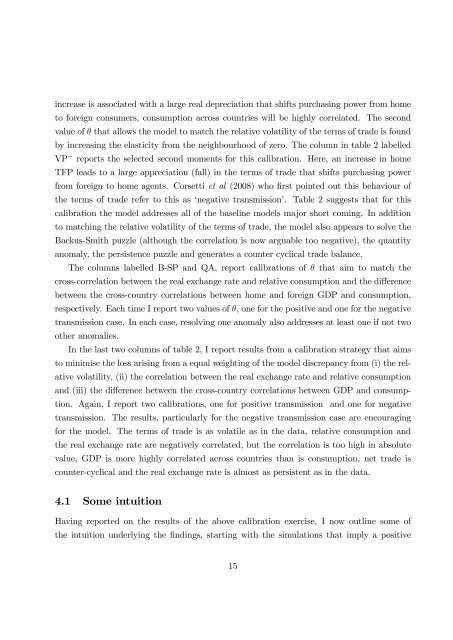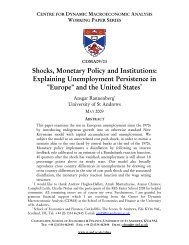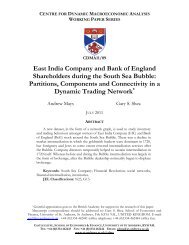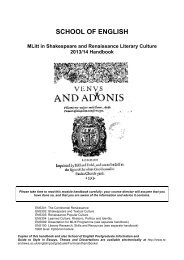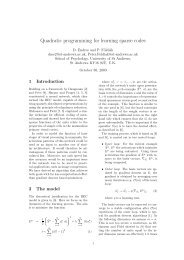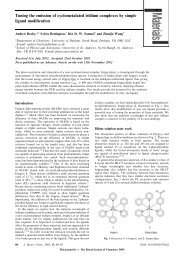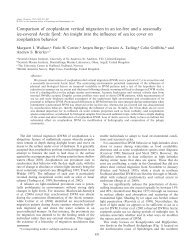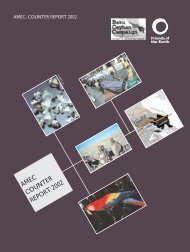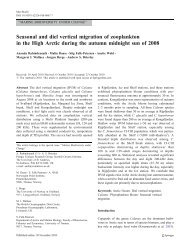Exchange rate dynamics, asset market structure and the role of the ...
Exchange rate dynamics, asset market structure and the role of the ...
Exchange rate dynamics, asset market structure and the role of the ...
Create successful ePaper yourself
Turn your PDF publications into a flip-book with our unique Google optimized e-Paper software.
increase is associated with a large real depreciation that shifts purchasing power from home<br />
to foreign consumers, consumption across countries will be highly correlated. The second<br />
value <strong>of</strong> that allows <strong>the</strong> model to match <strong>the</strong> relative volatility <strong>of</strong> <strong>the</strong> terms <strong>of</strong> trade is found<br />
by increasing <strong>the</strong> elasticity from <strong>the</strong> neighbourhood <strong>of</strong> zero. The column in table 2 labelled<br />
VP reports <strong>the</strong> selected second moments for this calibration. Here, an increase in home<br />
TFP leads to a large appreciation (fall) in <strong>the</strong> terms <strong>of</strong> trade that shifts purchasing power<br />
from foreign to home agents. Corsetti et al (2008) who …rst pointed out this behaviour <strong>of</strong><br />
<strong>the</strong> terms <strong>of</strong> trade refer to this as ‘negative transmission’. Table 2 suggests that for this<br />
calibration <strong>the</strong> model addresses all <strong>of</strong> <strong>the</strong> baseline models major short coming. In addition<br />
to matching <strong>the</strong> relative volatility <strong>of</strong> <strong>the</strong> terms <strong>of</strong> trade, <strong>the</strong> model also appears to solve <strong>the</strong><br />
Backus-Smith puzzle (although <strong>the</strong> correlation is now arguable too negative), <strong>the</strong> quantity<br />
anomaly, <strong>the</strong> persistence puzzle <strong>and</strong> gene<strong>rate</strong>s a counter cyclical trade balance.<br />
The columns labelled B-SP <strong>and</strong> QA, report calibrations <strong>of</strong> that aim to match <strong>the</strong><br />
cross-correlation between <strong>the</strong> real exchange <strong>rate</strong> <strong>and</strong> relative consumption <strong>and</strong> <strong>the</strong> di¤erence<br />
between <strong>the</strong> cross-country correlations between home <strong>and</strong> foreign GDP <strong>and</strong> consumption,<br />
respectively. Each time I report two values <strong>of</strong> , one for <strong>the</strong> positive <strong>and</strong> one for <strong>the</strong> negative<br />
transmission case. In each case, resolving one anomaly also addresses at least one if not two<br />
o<strong>the</strong>r anomalies.<br />
In <strong>the</strong> last two columns <strong>of</strong> table 2, I report results from a calibration st<strong>rate</strong>gy that aims<br />
to minimise <strong>the</strong> loss arising from a equal weighting <strong>of</strong> <strong>the</strong> model discrepancy from (i) <strong>the</strong> relative<br />
volatility, (ii) <strong>the</strong> correlation between <strong>the</strong> real exchange <strong>rate</strong> <strong>and</strong> relative consumption<br />
<strong>and</strong> (iii) <strong>the</strong> di¤erence between <strong>the</strong> cross-country correlations between GDP <strong>and</strong> consumption.<br />
Again, I report two calibrations, one for positive transmission <strong>and</strong> one for negative<br />
transmission. The results, particularly for <strong>the</strong> negative transmission case are encouraging<br />
for <strong>the</strong> model. The terms <strong>of</strong> trade is as volatile as in <strong>the</strong> data, relative consumption <strong>and</strong><br />
<strong>the</strong> real exchange <strong>rate</strong> are negatively correlated, but <strong>the</strong> correlation is too high in absolute<br />
value, GDP is more highly correlated across countries than is consumption, net trade is<br />
counter-cyclical <strong>and</strong> <strong>the</strong> real exchange <strong>rate</strong> is almost as persistent as in <strong>the</strong> data.<br />
4.1 Some intuition<br />
Having reported on <strong>the</strong> results <strong>of</strong> <strong>the</strong> above calibration exercise, I now outline some <strong>of</strong><br />
<strong>the</strong> intuition underlying <strong>the</strong> …ndings, starting with <strong>the</strong> simulations that imply a positive<br />
15


